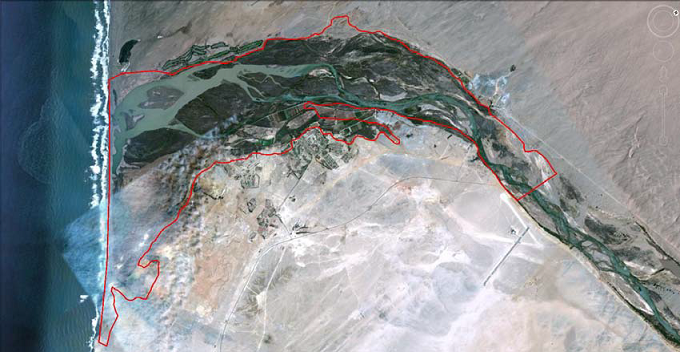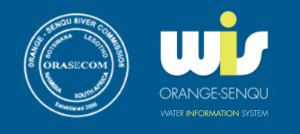Overview
This document discusses critical issues impacting on the health of the Orange-Senqu River Mouth and identifies local priority interventions recommended for the SAP implementation phase. The Orange-Senqu River mouth is situated between the towns of Oranjemund in Namibia and Alexander Bay in South Africa. The study area extended from the mouth to the head of tidal influence at the Sir Ernest Oppenheimer Bridge, approximately 11 km upstream, and included the banks up to the 5 m contour. The total area is approximately 2700 ha.

Background
Following South Africa’s accession to the Ramsar Convention, the Orange-Senqu River mouth was designated a Ramsar Site, i.e. a wetland of international importance, on 28/06/1991 (Cowan, 1995). Namibia ratified the Ramsar Convention in 1995, after which the designated area was enlarged and the Namibian part of the wetland was designated too. In September 1995 the South African Ramsar Site was placed on the Montreux Record (a list of Ramsar Sites that are in a degraded state) as a result of a belated recognition of the severely degraded state of the saltmarsh on the south bank (CSIR, 2001). The implication is that the Orange-Senqu River mouth may lose its status as a Ramsar Site unless the condition of the saltmarsh can be restored.
The Namibian section of the Orange-Senqu River mouth was recently included in the proclamation of the Sperrgebiet National Park in Namibia. However, the section in South Africa is still in the process of being formally protected through legislation. Turpie et al. (2002) ranked the Orange-Senqu as the seventh most important estuary in South Africa in terms of conservation importance. The Orange-Senqu River mouth is also one of only two estuaries on the Namibian coast, the other being the Kunene River mouth.
Purpose
The purpose of this document was to determine the Estuary’s importance and ecological status and make recommendations on improving the health of the Orange-Senqu River mouth.
Document:
Funding Organization:
Global Environment Facility through United Nations Development Programme
